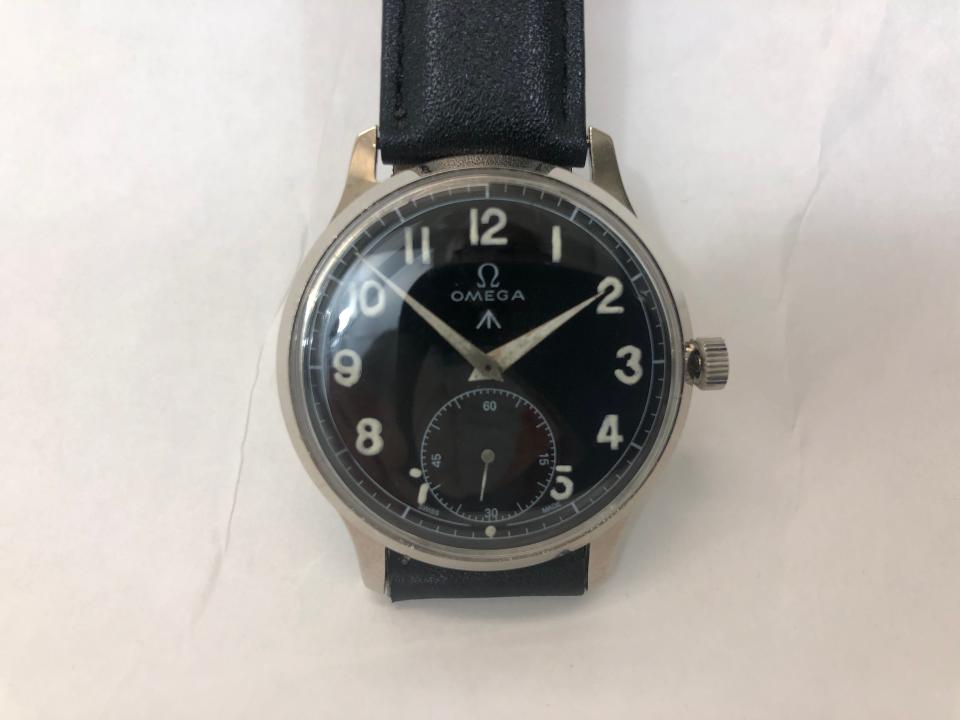Antiques: The 'Dirty Dozen' ... of watches
Most of us who carry Social Security cards have seen a lot of movies in our lifetime, and we all have our favorites. One of mine has to be "The Dirty Dozen," a 1967 war flick with a spectacular cast including Lee Marvin, Charles Bronson, Telly Savalas, and many others.
Over the years, that phrase has been applied to other things as well, including 12 of the most famous wristwatches of WWII. Some timepiece collectors look for nothing else. While their individual values are largely modest, a complete set recently sold in England for nearly $40,000. These watched have a fascinating story, too, so let's sneak a look.
The evolution of pocket watch to wristwatch was largely a result of WWI, when soldiers and airmen found it much quicker and safer to read the time while keeping both hands free. Early wristwatches — today known as trench watches — were mostly pocket watches reconfigured with lugs to support a wristband. Swiss watchmakers saw the future, and wristwatches quickly supplanted pocket watches following the war.
Nonetheless, as WWII began to loom, British military supply officers became concerned that England's own watchmakers would be too consumed with war production to make watches suitable for their needs. History has it that Alan Brooke, a ranking British army officer and advisor to Winston Churchill, came up with a set of standards for a suitable field watch and went in search for companies to make them.

Brooke's standards were very specific. His ideal watch included a black dial with luminous Arabic numerals, sub-second dial below the hand junction, shockproof 15 jewel movement, and shatterproof plexiglass crystal, among other features. Unable to ensure a domestic source of production, the British Ministry of Defense placed orders with a dozen different Swiss makers for such watches. Some, like IWC, Longines and Omega, were already famous, but others like Grana, Record and Timor were much less well known.
It wasn't until 1944 that the watches began to arrive, and within a year, the war was over.
While the record is murky as to exactly how many watches each firm was able to make, it appears that a total of around 150,000 were ultimately delivered to the MoD. The larger firms such as Omega seem to have made some 25,000 pieces, while the smaller companies completed far fewer.
Watches from Grana — later known as Certina — are the hardest to find, and by themselves can run upwards of $15,000 today. It's possible that fewer than 1,000 such watches were ever made. Their scarcity makes assembling a complete set of Dirty Dozen watches quite a challenge ... but it can be done.
After the war, several firms continued making watches to Dirty Dozen standards, and today you can find them quite readily. All the same, those watches from the original lots will have assorted markings on the back, including the distinctive "W.W.W." (Watch, Wrist, Waterproof), the British broad arrow military acceptance mark, and assorted logistical numbers.
Despite the relative abundance of most models, fewer than 20 complete and original sets of Dirty Dozen watches are thought to exist. If you already have a few, it can be quite a rabbit hole to find the rest. On the other hand, the fun is in the searching ... isn't it?
Mike Rivkin and his wife, Linda, are longtime residents of Rancho Mirage. For many years, he was an award-winning catalogue publisher and has authored seven books, along with countless articles. Now, he's the owner of Antique Galleries of Palm Springs. His antiques column appears Sundays in The Desert Sun. Want to send Mike a question about antiques? Drop him a line at info@silverfishpress.com
This article originally appeared on Palm Springs Desert Sun: Antiques: The 'Dirty Dozen' ... of watches

